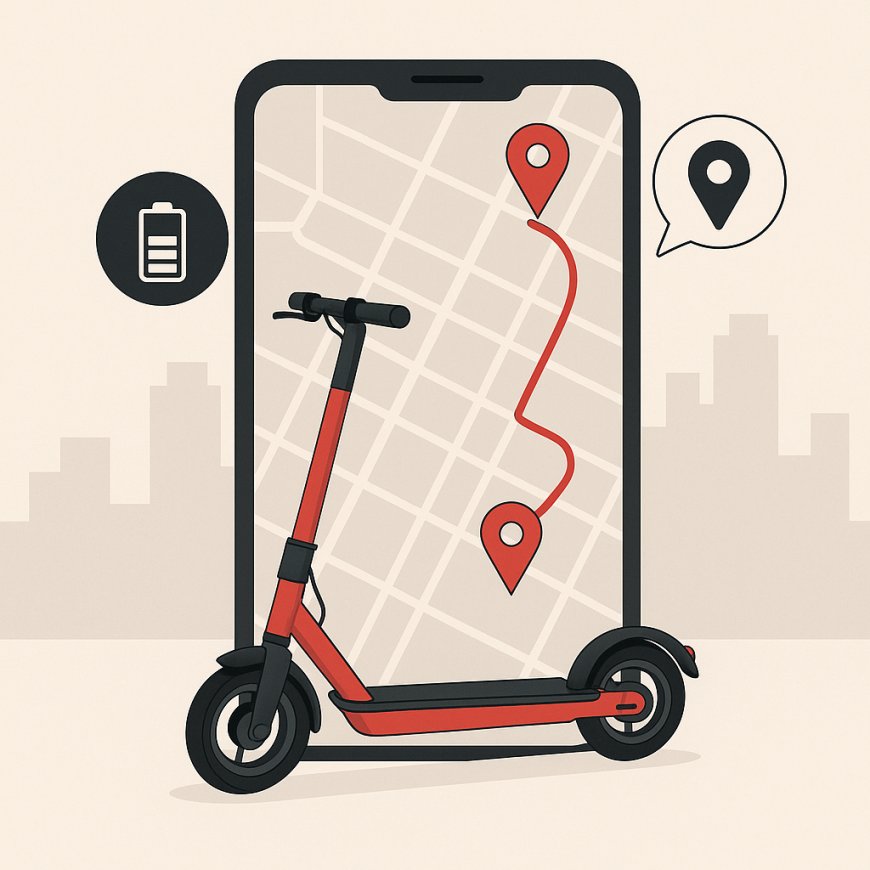Steps to Start Your Own E-Scooter App Business
Learn the essential steps to start your e-scooter app business, from market research to app development, legal setup, launch strategy, and scaling.

Electric scooters have become a popular alternative to traditional transportation in urban areas. Their convenience, cost-effectiveness, and eco-friendliness have attracted a large user base, making them an ideal business opportunity for tech entrepreneurs. If you are planning to launch your own e-scooter sharing platform, the foundation of your business lies in smart planning and expert e scooter App Development. In this blog, we walk you through the key steps required to launch a successful e-scooter app business.
Understand the e-scooter market and user expectations
Before you invest in any technology, it is essential to study the current market landscape. Analyze trends in micro-mobility, the growth of shared mobility services, and user behaviors. Urban populations are increasingly shifting towards short-distance travel solutions. Research key players in your region or globally to understand what works and what doesn't. Consider the demographics of your target audience and the locations where demand is likely to be high. Users look for features like ride availability, affordability, easy navigation, safety, and smooth app experiences.
Choose the right business model and revenue strategy
The business model you select will impact your operations and development choices. Some common revenue models include pay-per-ride, subscription-based plans, and advertising. You may also choose to collaborate with businesses and city municipalities to offer customized mobility solutions. Decide if you will own the e-scooters or partner with third-party hardware providers. A hybrid model is also possible where you manage operations in key cities and use franchise models in others. Each approach will have different implications on costs, logistics, and app functionality.
Ensure legal compliance and secure government approvals
One of the most crucial steps in starting your e-scooter business is complying with regional transportation laws. Many cities have specific regulations for electric scooters such as speed limits, parking zones, and riding areas. You need to apply for the required permits and licenses. Ensure that your app and vehicles meet all safety standards. It is also advisable to consult with legal professionals to understand your obligations regarding insurance, liability, and user data protection. Failing to meet these requirements could result in penalties or service restrictions.
Choose reliable and durable e-scooter hardware providers
Your app is only one part of the business. The physical scooters must be robust, reliable, and easy to maintain. Choose hardware that includes GPS tracking, IoT sensors, remote locking and unlocking, and battery monitoring systems. These features are critical for efficient fleet management. Test different hardware options and compare suppliers based on product lifespan, cost, maintenance support, and integration capabilities with your software. Partnering with established manufacturers can help reduce risks and ensure better compatibility with your platform.
Plan a scalable backend infrastructure and database system
To support your apps growing user base, you need a backend system that is both scalable and secure. Your database should efficiently handle user data, location information, ride logs, and payment records. Use cloud-based solutions to enable better uptime and scalability. Make sure your system can support real-time updates, especially for scooter locations and availability. Also, invest in data analytics tools to help you track user behavior, popular ride zones, and performance metrics. This helps in improving operational efficiency and customer satisfaction.
Focus on key features during e scooter App Development
When it comes to e scooter App Development, focusing on the right features can make or break your success. The user interface should be intuitive and fast. Key features include user registration, map integration, real-time scooter tracking, QR code scanning for unlock, ride history, payment gateway integration, customer support, and notifications. Admin panel features should support fleet management, rider data, fare settings, and analytics. Make sure the app is developed for both Android and iOS platforms for maximum user reach.
Hire experienced developers or partner with a mobile agency
To ensure a smooth and professional launch, work with experienced developers or a Mobile App Development company in USA. They bring the required technical skills, development frameworks, and experience to create a high-performance app. Choose a team that understands the e-scooter ecosystem and has experience integrating third-party services like payment gateways, map APIs, and IoT device protocols. Regular updates, bug fixes, and post-launch support are also critical. Review their portfolio, development process, and client reviews before making your decision.
Estimate budget and calculate e-scooter app development cost
Understanding the E-Scooter App Development Cost is essential for financial planning. The total cost depends on several factors such as the number of app features, the complexity of backend development, design quality, choice of platform, and the location of your development team. You should also factor in hardware costs, licensing fees, marketing, and operational expenses. A basic MVP app may cost less, but a fully featured and scalable platform will require a larger investment. Always compare different cost estimates and look for long-term ROI rather than just initial savings.
Test thoroughly before launch and optimize user experience
Before going live, perform extensive testing to ensure that all app functions operate smoothly. Conduct usability testing with real users to identify potential bugs or confusing interfaces. Pay attention to app speed, location accuracy, and payment reliability. Your initial users will shape your apps reputation, so strive to deliver the best first experience. Gather feedback and make necessary adjustments before launching in a larger market. Regular app updates and improvements are necessary to keep up with user demands and technical advancements.
Create a launch plan and build a marketing strategy
A successful product launch requires more than just a working app. You need a well-planned marketing strategy to attract users and create brand awareness. Use social media, local influencers, community outreach, and referral programs to generate buzz. Provide attractive offers to early adopters. Create user guides, demo videos, and FAQs to help users understand how to use the app and ride safely. You should also build a customer support system to assist with any issues during the initial phase of operations.
Monitor performance and scale based on real data
Once your app is live, continuously monitor its performance. Track metrics such as user retention, ride frequency, fleet availability, and customer feedback. Use this data to improve your services and make informed decisions about expansion. Consider launching in new cities or introducing new vehicle types like e-bikes or mopeds based on demand. Performance data will also help you optimize maintenance schedules, reduce operational costs, and maximize profits.
Conclusion
Starting an e-scooter app business is a promising opportunity in the evolving mobility landscape. However, success depends on detailed planning, market understanding, legal compliance, quality development, and ongoing optimization. Investing in expert e scooter App Development can help you build a scalable and user-friendly platform that stands out in the competitive market. With the right strategy, resources, and technology, you can create a thriving business that meets modern urban transportation needs while contributing to a greener future.























